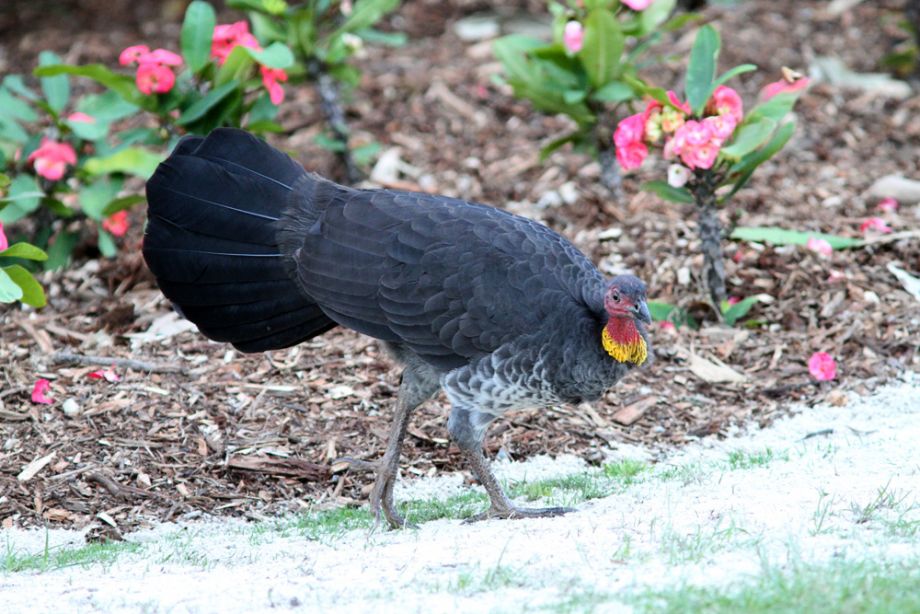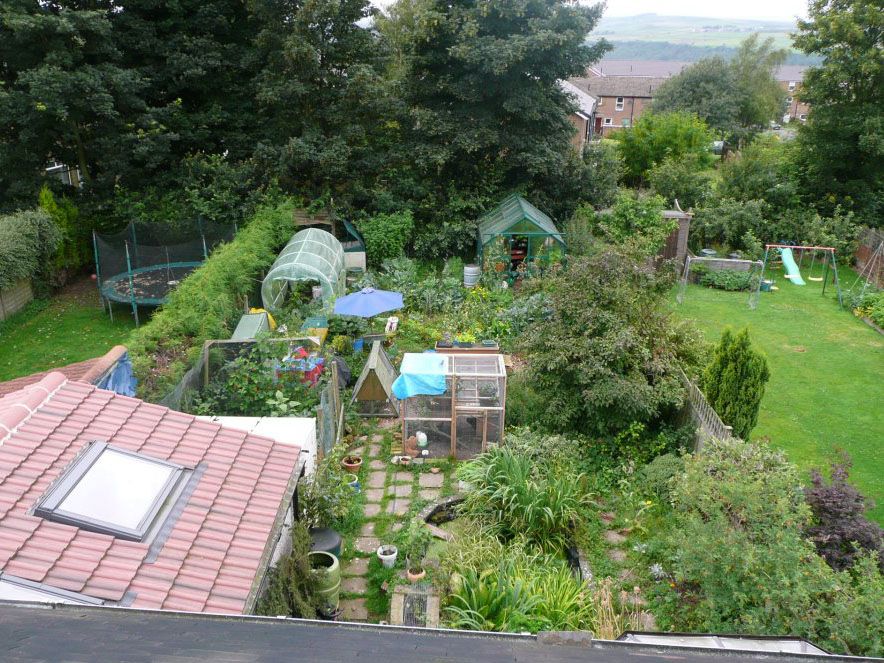Are You A Vanguard? Applications Now Open
In this 2015 photo, a coyote pup loiters in the Westlake neighborhood of Los Angeles.
National Park Service
This is your first of three free stories this month. Become a free or sustaining member to read unlimited articles, webinars and ebooks.
Become A MemberEDITOR’S NOTE: The following is an excerpt from Darwin Comes to Town: How the Urban Jungle Drives Evolution, by Menno Schilthuizen, published by Picador. In the book, Schilthuizen, an evolutionary biologist, elaborates on the fascinating and ingenious ways that plants and animals are adapting to live in cities, and argues that the influence of urban environments can actually accelerate evolution.
According to Herbert Sukopp, the Berlin-based patriarch of European urban ecology, buried in Joakim Schouw’s 1823 tome “Grundtraek til en almindelig Plantegeographie” (“Foundations to a General Geography of Plants”) should be the very first mention of urban plants. I will just take Sukopp’s word for it that Schouw, somewhere in this impenetrable text, writes, with inter-letter spaces for extra emphasis: “Plants that occur near cities and towns are called P l a n t a e U r b a n a e; for example Onopordon Acanthium [cotton thistle], Xanthium strumarium [common cocklebur]. In most cases, an alien origin is the cause by which these plants are found only in the vicinity of cities and towns.”
It’s interesting that two centuries ago, botanists were already recognizing how exotic species form an important contribution to the urban biodiversity. In those days, the major avenues that today are bringing exotic plant species into cities did not yet exist: there were no garden centers, scattered bird seed, or globalized agricultural produce. And the pet trade, as well as the planes, trains, and automobiles on which far-flung fauna nowadays hitch accidental rides, were also not yet as commonplace as they are now. With these activities bringing so many exotic species into cities, it is no surprise that nowadays, much more strongly than in Schouw’s time, urban biodiversity is an eclectic mix of species from all over the world. In European and North American cities, the wild flora consists of 35 to 40 percent exotic species. And in the city center of Beijing, this figure is 53 percent. Sometimes, the role that socio-economic factors play in these patterns is all too apparent. In Phoenix, Arizona, botanists measured the plant diversity in more than two hundred plots, each 30 by 30 yards, strewn randomly across the city and its surroundings. They discovered that one of the factors most strongly determining how many types of plant they would find in a plot was the affluence of the local neighborhood. The better- off the residents, the greater the diversity of plants. This effect (which they called the “luxury effect”) is a clear sign that travel and trade, and the relentless escapism of exotic plants from well- tended gardens, are responsible for the botanical enrichment of urban centers.
These constantly arriving foreign inhabitants form the first of at least four explanations for the high biodiversity urban naturalists are encountering in their cities. A second explanation is the fact that the places where people like to build their settlements, which then grow into cities, are often biologically rich areas to begin with. If you open an atlas and look where the world’s biggest cities are, you’ll notice that they are not on mountain plateaus, deserts or other biologically poor regions. Instead, they are in the exact same places where we find biodiversity hotspots: estuaries, flood plains, fertile low-lying areas, and other places where humans and wildlife alike find plenty of food and many different niches are available. In other words, the second reason for the rich biodiversity of a city is that it was already rich before the city was built. Some of this richness will have clung on in the remaining patches of habitat, embedded in the city as it develops. As we saw in an earlier chapter, much of Singapore’s native flora and fauna live in those slivers of primary forest that have survived amid the city’s growth.
A third source of urban biological richness is, in fact, the loss of good-quality habitat immediately outside the city perimeter. These days, many urban centers are ecological oases compared with the surrounding countryside. In the past, it was the countryside (with its romantic small-scale hodgepodge of fields and pastures, hedges and bushes, brooks and ponds) where the landscape was richly varied and every nook and cranny provided habitat for different species. That is why New York–based naturalists in the nineteenth century would venture out into the vicinity of the Big Apple. Compared with such pastoral bliss, the biodiversity of the beat-up wasteland of the inner city, with its factories and pollution, was decidedly poor. Today, in many countries, the tables are turned. In the agricultural countryside, little or no space for biodiversity is left among the obsessively manicured fields and plantations, bisected by machine-dug canals straight as a die, where maximum agricultural production is squeezed out of every square inch of land—especially as expanding cities eat up more and more arable land. Compared to such sterile, geometric landscapes, the messiness of the urban center, a varied mix of backyards, green roofs, old stone walls, overgrown drains, and city parks, is a haven for a lot of wildlife.
Botanists Zdena Chocholoušková and Petr Pyšek documented this turning of the tables for the city of Plzeň in the Czech Republic, for example. They worked their way through piles of old publications, reports, and herbariums to record the changes in the flora of the city and its surroundings over the past 130 years. Inside the city, they saw that the number of plant species rose steadily, from 478 in the late nineteenth century to 595 in the 1960s and 773 today. In the surrounding countryside, by contrast, the trend was opposite: from 1,112 to 768 to 745. Why? Probably because in the twentieth century, the countryside, with its increasing agricultural intensification, had become more hostile to plant life, while in the city center, the reverse had happened. With a little poetic license, you could say that weeds, prosecuted and outlawed in the country, had taken up refuge inside the city walls.

The Australian brush-turkey, entrenched in cities such as Brisbane and Sydney, digs up people's backyards to construct enormous nest mounds, some of which can weigh up to four tons. (Photo by Dave Curtis/Flickr)
Organisms that almost literally enjoy sanctuary in cities are large vertebrate animals. Brush-turkeys in Sydney, coyotes in Chicago, foxes in London, leopards in Mumbai, and mugger crocodiles in Gujarat … All over the world, cities have witnessed an influx of large, and often dangerous, birds, mammals, and reptiles. Of course, given their size, sometimes these are simply the eye-catching tip of the iceberg of thousands of similar, but less visible, changes in the urban biodiversity. But in the case of this megafauna, often it’s the relaxed attitude of urbanites that makes the city more welcoming than their native habitat.
Take coyotes, for example. Ever since the American Midland Naturalist in 1980 published an article on the behavior of a renegade coyote living in downtown Lincoln, Nebraska, these canines have been moving into cities hand over fist. Stanley Gehrt, an urban zoologist at Ohio State University, has been tagging hundreds of coyotes in Chicago with ear tags and microchips. He estimates that there are now more than 2,000 in the city. Four hundred of those he has fitted with radio and GPS collars and followed them around on their prowls along railway lines, watched them waiting at traffic lights and raising their young on the roof of a parking garage. Jaded city slickers as they may be, one of the main benefits they enjoy in the city seems to be the lack of persecution. Compared to rural coyotes, the ones in cities have a four-fold lower chance of dying a violent death. “We’re now seeing generations of certain carnivores that have had fairly light amounts of persecution by people,” Gehrt told the magazine Popular Science in 2012. “They may view cities quite a bit differently than their ancestors did 50 years ago. Then, if they saw a human, there was a good chance they were going to get shot.”
“Same thing here, mate,” the Australian brush-turkey (Alectura lathami) might have butted in from the other side of the globe. For centuries, this species of “incubator bird” (fowl that build huge mounds of sand and leaves to let the heat of rot incubate their eggs) was a favorite snack to shoot and fry when you were out in the bush. Today, thanks to a hunting ban imposed in the early 1970s, this former bush tucker has made a spectacular comeback. Not only in rural Australia, but, unexpectedly, especially in cities, where the prohibition is presumably respected better than in the outback. Brush-turkey expert Darryl Jones of Griffiths University says that, in the past twenty years, the Brisbane population has grown sevenfold, with Sydney set to surrender next. That this particular large bird would ever develop an urban streak was unexpected, since its nesting habit would seem to be impossible to maintain in cities. Not so: the birds simply dig up people’s backyards and use entire garden beds to construct their nest mounds that can weigh up to four tons. (Now there’s an ecosystem engineer if ever there was one!) Small wonder the Australian Broadcasting Corporation advises people to do the following to minimize brush-turkey damage: 1) place rocks around precious plants; and 2) attract the bird to a less valuable area of your garden by building a compost mound yourself. Crikey, that’s almost as much work as replanting your flower bed!
The fourth and final explanation for the rich biodiversity of cities is the sheer diversity of habitat patches. Think about it: when we view a city with human eyes we may see shopping streets, parking lots, thoroughfares, business districts, and pedestrian zones. But to a peregrine falcon soaring overhead, a hoverfly cruising along a main street, or a fluffy milkweed seed parachuting down, the city is a kaleidoscope of rocky ledges, humid pits, strips of moss, and underground streams. These scattered bits of habitat form a surprisingly varied landscape, with a multitude of niches jointly supporting a rich, but heavily fragmented, biodiversity.
Consider the endless variety that exists among urban gardens: sterile ones smothered in tiles, pebbles, and perfectly groomed exotic bushes … vertical green walls … messy backyards that nobody pays any mind … gardens composed of nothing but a fenced lawn … roof gardens with potted palms and rock-dwelling herbs … vegetable gardens … swampy gardens with a pond and a slippery rocky slope … In our age of individuality, there are as many types of gardens as there are gardeners. In 1999, a team of biologists from the University of Sheffield, led by the prolific ecologist Kevin Gaston (he has since moved to the University of Exeter), began a multi-year project to study the ecology of urban gardens in Sheffield. The name of the original project is BUGS: Biodiversity of Urban Gardens in Sheffield.

A permaculture garden in Sheffield, United Kingdom. (Photo by Claire Gregory)
To begin with, the BUGS team conducted a telephone survey. Choosing random entries from the city’s phone book, they posed a set of garden-related questions to whomever picked up. That is, provided the homeowner was amenable to collaboration, because, as the team dryly write in one of the scientific papers, “in some cases, the call was terminated before its purpose could be conveyed to the recipient.” Based on 250 interviewed homeowners, they estimated that the 175,000 domestic gardens in this city of 500,000 inhabitants, jointly covering about a quarter of the entire city surface, hold 25,200 ponds, 45,500 nest boxes, 50,750 compost heaps, and 360,000 trees. In other words: a huge ecological resource. Yet, urban gardens are rarely included in any account of a region’s green spaces. And far from being the biological deserts that ecologist Charles Elton (in his 1966 book The Pattern of Animal Communities) proclaimed they were, the BUGS project proved them to be replete with wildlife.
The BUGS people found sixty-one homeowners willing to allow a rather overwhelming invasion of their privacy. Anyone who has ever watched a group of field biologists given free rein knows what this means. The team took out measuring tapes to obtain the exact dimensions of each garden and its types of ground cover, and drew a sketch map on the spot. They went about with plant guides and notebooks and identified each and every tree, bush, and herb that they could find, including those in pots and ponds. While they were at it, they also collected leaves with insect “mines”: those squiggly tunnels made by the larvae of certain moths, flies, or other insects. Most of these mines are so characteristic that an expert can tell which species made them without even seeing the actual animal.
Along the edge of each garden, they placed three “pitfall traps”: white plastic coffee cups dug into the ground, aimed at trapping insects and other arthropods that blunder into them and cannot get out. To make sure, the team filled the cups with alcohol. Normally, a more toxic chemical, ethylene glycol, is used for this, but, as the team wrote, ethanol was used instead because of “the risk of being found by pets or children.” They then dug up bags full of dead leaves and soil to look for other invertebrates, and, as if all that weren’t enough, they also built a Malaise trap to catch flying insects. Despite their scorched-earth approach to urban garden ecology, the team reports that in most gardens they still were offered tea and biscuits.
In these sixty-one garden-size field sites they found 1,166 different plant species. As is to be expected from planted gardens, the majority of those species (70 percent) were exotic. But still, 344 species (that’s a quarter of the entire British flora!) were native species. The 30,000 or so invertebrates they found belonged to roughly 800 species. No numbers to be sniffed at, but also not huge, compared with what Denis Owen found in a single garden. But what is more important is not the sheer numbers of species, but rather the changes from one garden to the next. About half of all the species of insects and spiders that they found were living in just a single garden. And when the team made a so-called “accumulation curve,” which showed how the overall tally increased with every new garden added to the list, the curve showed no signs of leveling off. In other words, every garden has an almost completely different flora and fauna.
So that is just sixty-one gardens, a vanishingly small fraction of all Sheffield’s gardens, which, in turn, is just a sliver of the entire garden area in the whole of the UK. Just imagine the combined biodiversity that all those yards, gardens, and plots hold. Imagine the same for all those other forgotten bits of habitat in the city: neglected gutters, roadside verges, mossy roofs …
Of course, cities are challenging in their own way, but at least for animals and plants that can disperse over long distances and are able to survive in those small, isolated pockets of habitat, the city is a surprisingly varied, mosaic landscape, offering more microhabitats to a great array of species. Add to that the other three reasons for urban biological richness (exotic species, pre-existing biodiversity hotspots, sanctuary from persecution), and we begin to understand why the species lists that urban naturalists are compiling are so lengthy.
Lengthy, perhaps, but not random. Not every kind of animal or plant can live its life in the city. Some species have properties that make them less suited for life as a city slicker, whereas other species are cut out for the job. Those properties, and how they evolve, form the core of this book.
Excerpted from Darwin Comes to Town: How the Urban Jungle Drives Evolution by Menno Schilthuizen. Published by Picador April 3rd, 2018. Copyright © 2018 by Menno Schilthuizen. All rights reserved.

Menno Schilthuizen is a senior research scientist at Naturalis Biodiversity Center in the Netherlands and professor of evolutionary biology at Leiden University. The author of more than 100 papers in scientific literature, he has also written more than 250 stories, columns, and articles for publications including New Scientist, Time, and Science. A frequent guest on radio and television, he is the author of three previous books: Frogs, Flies, and Dandelions (2001), The Loom of Life (2008), and Nature’s Nether Regions (2014). Together with Iva Njunjić, he runs Taxon Expeditions, which organizes scientific expeditions for laypeople.

20th Anniversary Solutions of the Year magazine